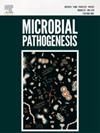The review discusses the recurrence of Mycoplasma pneumoniae (M. pneumoniae), a bacterium causing atypical pneumonia, primarily affecting Europe and Asia due to climate change, immunity decline, antibiotic resistance, and genetic heterogeneity. The COVID-19 pandemic initially reduced M. pneumoniae cases due to preventative measures, but its reemergence suggests different transmission dynamics and exacerbates clinical severity with co-infections with other viruses. The pathogenicity of M. pneumoniae is attributed to its intracellular changes, toxin release, and adhesion processes, which can result in a variety of symptoms and problems. Antibiotics and immunomodulators are used in treatment, and attempts are being made to create vaccines. Effective management of its reappearance necessitates surveillance and preventative measures, especially in the context of co-infections and potential outbreaks. M. pneumoniae's resurgence highlights its reliance on a polarized cytoskeletal architecture for host cell attachment and pathogenicity through cytoadherence and cytotoxic agent synthesis. M. pneumoniae has returned even though the COVID-19 pandemic originally reduced incidence; this might be because of things like declining immunity and particular pathogenic characteristics. Meteorological factors like temperature and humidity, along with air quality, including pollutants like PM2.5 and NO2, increase susceptibility to environmental hazards. During the pandemic, non-pharmaceutical measures decreased transmission but did not eradicate the infection. Epidemics typically occur three to five years apart, emphasizing the need for ongoing study and observation. Antimicrobial resistance is a serious issue, necessitating caution and alternative therapies, especially in macrolides. COVID-19 pandemic lessons, such as mask use and hand hygiene, may help limit M. pneumoniae transmission.


